Best Treatments for Termites in Wood: Effective Solutions for Homeowners
Termites in wood can quietly destroy your home. Learn how to spot an infestation early, understand the types of termites, and discover effective treatments and prevention strategies.
Key Takeaways
Termite infestations often go undetected until significant damage occurs, making early identification through signs like hollow-sounding wood and musty smells crucial.
Effective treatments for termites include borate wood treatments that disrupt their digestion, and eco-friendly options like neem oil and orange oil for targeted control.
Preventing future termite problems involves maintaining proper home upkeep, such as fixing leaks, sealing gaps, and removing wood-to-soil contact to make your home less inviting to termites.
1 Identifying Termites in Wood
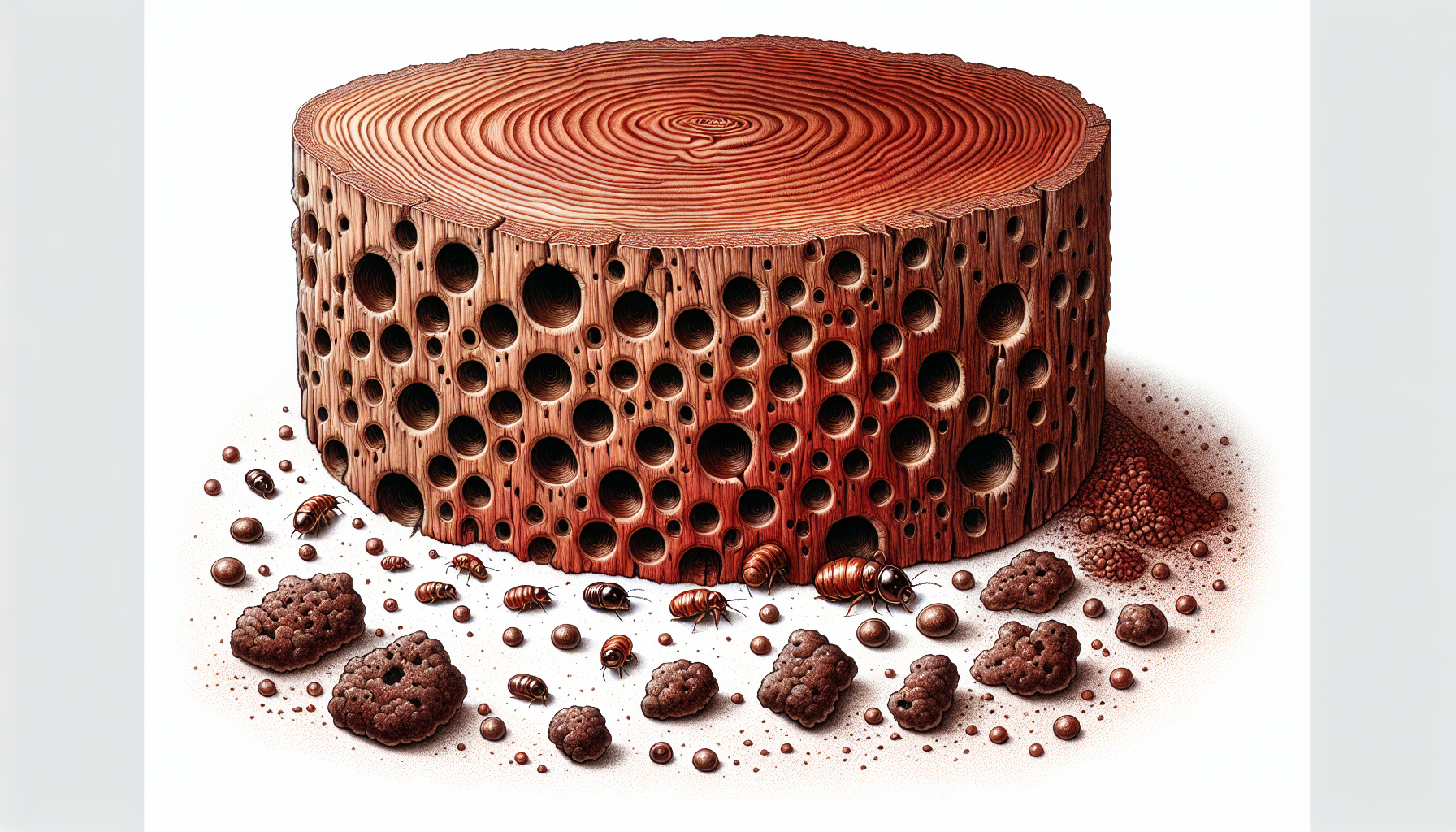
Have you ever come across small pinprick holes in your drywall or discovered delicate wings littered on your window sills? These tell-tale signs might indicate a termite infestation, one of the most dreaded issues a homeowner can face. Termites are covert operators, often remaining undetected until significant damage has occurred.
CONTACT US NOW for a free inspection !
Drywood termites, notorious for their covert behavior, often leave the following signs of their presence:
Fecal pellets that look like small heaps of salt or pepper
Feeding damage on wood
Shed wings
Kickout holes
Although they can be challenging to spot, a thorough professional inspection can unearth their presence.
Subterranean termites, on the other hand, construct tell-tale mud tubes as highways to their food sources, often hidden in plain sight, just like carpenter ants.
Types of Termites That Infest Wood
Two primary types of termites dominate North America: subterranean and drywood termites. Subterranean termites are the underground dwellers, forming colossal colonies and constructing mud tubes to traverse and feast on your home’s foundation and beyond. These termites are the heavy hitters, responsible for a staggering 95 percent of termite damage in North America, with the power to even collapse entire buildings.
Drywood termites, while less numerous, are no less nefarious. They thrive within the wooden structures of your home, such as attic wood, without needing soil contact or much moisture, making them difficult to detect and treat. A drywood termite infestation is identifiable by their larger size compared to their subterranean counterparts, and by the distinct characteristics of their fecal pellets and the large mandibles of their soldiers. It is crucial to address drywood termite infestations promptly to prevent extensive damage to your home.
Regardless of whether they’re hidden underfoot or within your walls, it’s vital to protect wood, especially untreated wood, by dealing swiftly and decisively with wood boring beetles and other wood-destroying organisms.
Common Signs of Termite Infestation
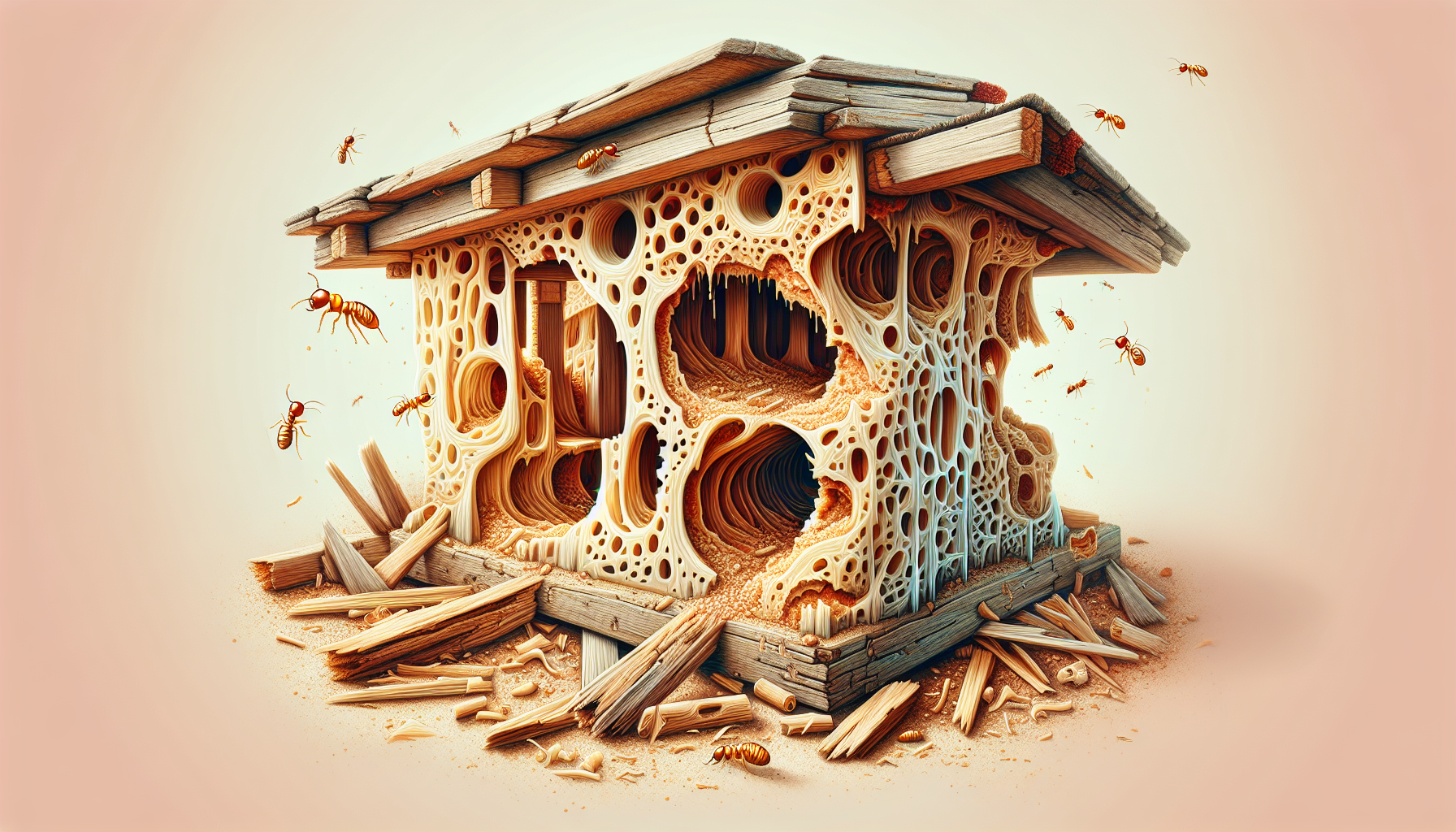
A termite invasion, often a silent disaster, typically manifests through subtle but alarming signs. Imagine tapping on a beam only to hear a hollow echo where solid wood should be—a grim indicator of termites dining within. Or perhaps you’ve noticed your floors betraying a suspicious squeakiness or your tiles starting to loosen, both potential whispers of underlying termite damage.
These hidden destroyers can also leave behind a musty scent, especially in moisture-rich areas, adding to the list of red flags. In severe cases, the structural integrity of your home may be compromised before you even realize there’s an issue, evidenced by buckling beams, sagging ceilings, and blistered floors. Remaining vigilant for these signs can be the difference between catching an infestation early and facing extensive, costly damages.
Impact of Termites on Wooden Structures
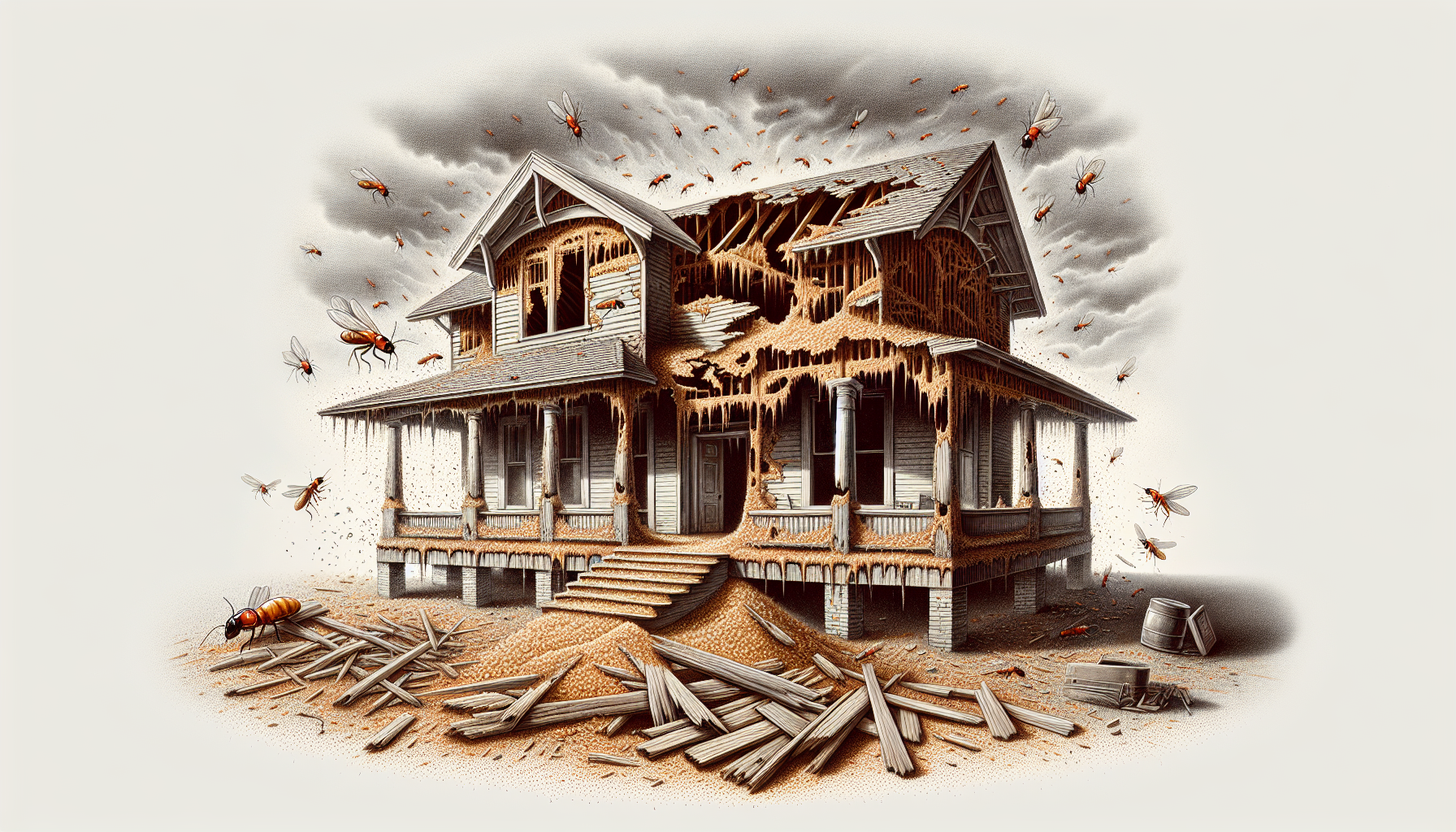
Termites wage a silent battle against wooden structures, leaving visible scars in their wake. These wood destroying insects are not mere nuisances; they are capable of inflicting damage that leads to significant financial strain and the daunting prospect of extensive repairs. In the United States alone, termites cost homeowners more than $5 billion annually, a staggering figure that often comes out of pocket due to insurance policies typically not covering termite damage.
The structural integrity of your abode is at risk when termites invade. You might find windows and doors that used to open smoothly are now sticking, another signal of the damage lurking beneath the surface. In commercial settings, the visual blight of termite destruction can deter customers, impacting not just the building but also the bottom line. The need for vigilance and proactive measures against termites becomes clear when considering the potential for catastrophic outcomes.
Effective Wood Treatments for Termite Control
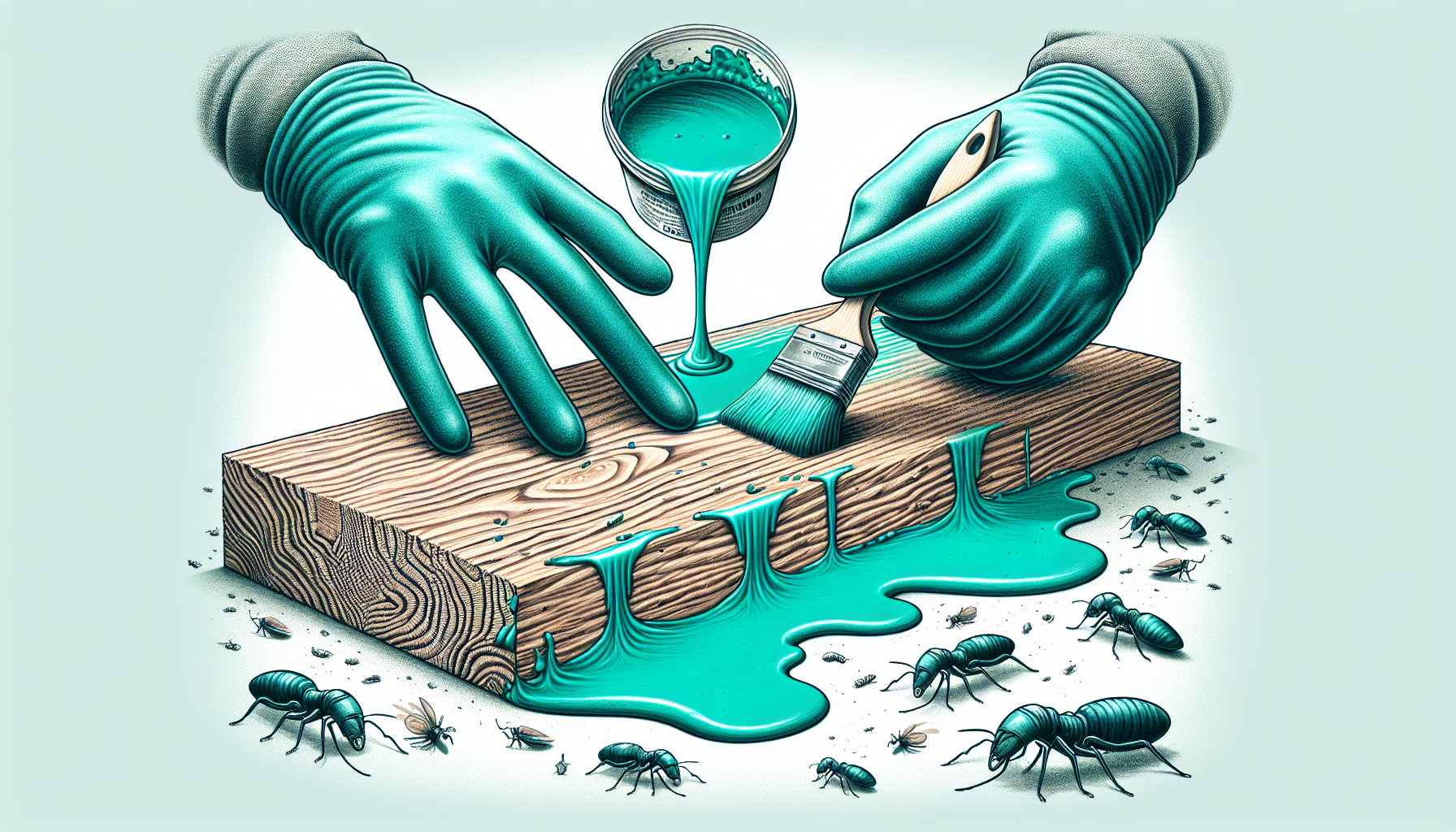
Combatting termites necessitates a variety of effective wood treatments. Homeowners have a variety of options at their disposal, from preventive wood preservatives to targeted treatments that can be applied directly to infested areas. The goal is to not only halt the current invasion but also to fortify the wood against future termite skirmishes.
Borate Wood Treatment
Borate wood treatment is a highly trusted method in the battle against termites, and it can be an alternative to pressure treated wood. This powerful wood preservative seeps deep into the wood’s fibers, setting up a line of defense that termites cannot breach. Borate compounds disrupt the digestive process of termites, effectively starving them and providing long-term protection to your home.
For homeowners, applying borate wood treatment is a proactive measure, best used in areas of the home that are particularly vulnerable to termite attack, such as floor joists and sill plates. It’s important to ensure that the wood is untreated and bare, allowing the borate solution to penetrate effectively for maximum protection. With products like Boracare leading the charge, borate wood treatment stands as a stalwart protector against these voracious pests, making it a preferred alternative to treated wood.
Neem Oil and Orange Oil Treatments
Nature provides eco-friendly alternatives to traditional termite treatments, including neem oil and orange oil. Neem oil, derived from the seeds and fruits of the Neem tree, acts as a hormone disruptor, inhibiting termite growth and preventing them from laying eggs. By mixing neem oil with water and applying it via a spray bottle, you can target affected areas and reapply every few days until the infestation subsides.
Orange oil, on the other hand, contains the potent compound d-limonene, which is lethal to termites on contact. Injecting orange oil directly into termite galleries can deliver a fatal blow to these hidden invaders. The sweet scent of the oil is an added bonus, making it a more pleasant option than harsher chemicals. Yet, it’s the effectiveness of these natural treatments in protecting your home that truly shines, providing a breath of fresh air in the realm of pest control.
Professional Termite Control Methods
If termites have deeply infiltrated your home, professional termite control methods become necessary. These powerful interventions go beyond the reach of DIY solutions, ensuring every hidden termite, from the laborers to the queen, is eliminated.
With expertise and specialized equipment, professional pest controllers can deploy a range of treatments tailored to the scale and severity of the infestation.
Fumigation
Fumigation is the equivalent of a full-scale assault on termite colonies. This potent solution involves enveloping the entire structure in a gas, such as sulfuryl fluoride, that penetrates wood and other materials to eradicate termites. The process, which can last from one to three days, requires the home to be meticulously sealed to contain the fumigant and ensure its effectiveness.
Post-fumigation, the home is aired out thoroughly to clear any chemical traces, making it safe for reoccupation. Safety checks are conducted to guarantee that the environment is free from residual gases.
While fumigation may seem like a drastic measure, it’s a necessary tactic against drywood termites that burrow away from the surface and require a comprehensive approach to extermination.
Chemical Treatments
Yet another tool in the professional pest controller’s kit is the use of chemical treatments. These include liquid termiticides like Termidor, which utilize active ingredients like Fipronil to decimate subterranean termite colonies while providing lasting protection against future invasions. Foams and dusts complement these liquids, reaching into the nooks and crannies where termites hide, ensuring comprehensive coverage.
Safety is paramount, and chemical treatments used for termite control are EPA-registered, balancing efficiency with environmental responsibility. These chemicals create an invisible barrier that termites cannot detect, ensuring they come into contact with the treatment as they continue their normal routines, leading to the eventual collapse of the entire colony.
Preventing Future Termite Infestations
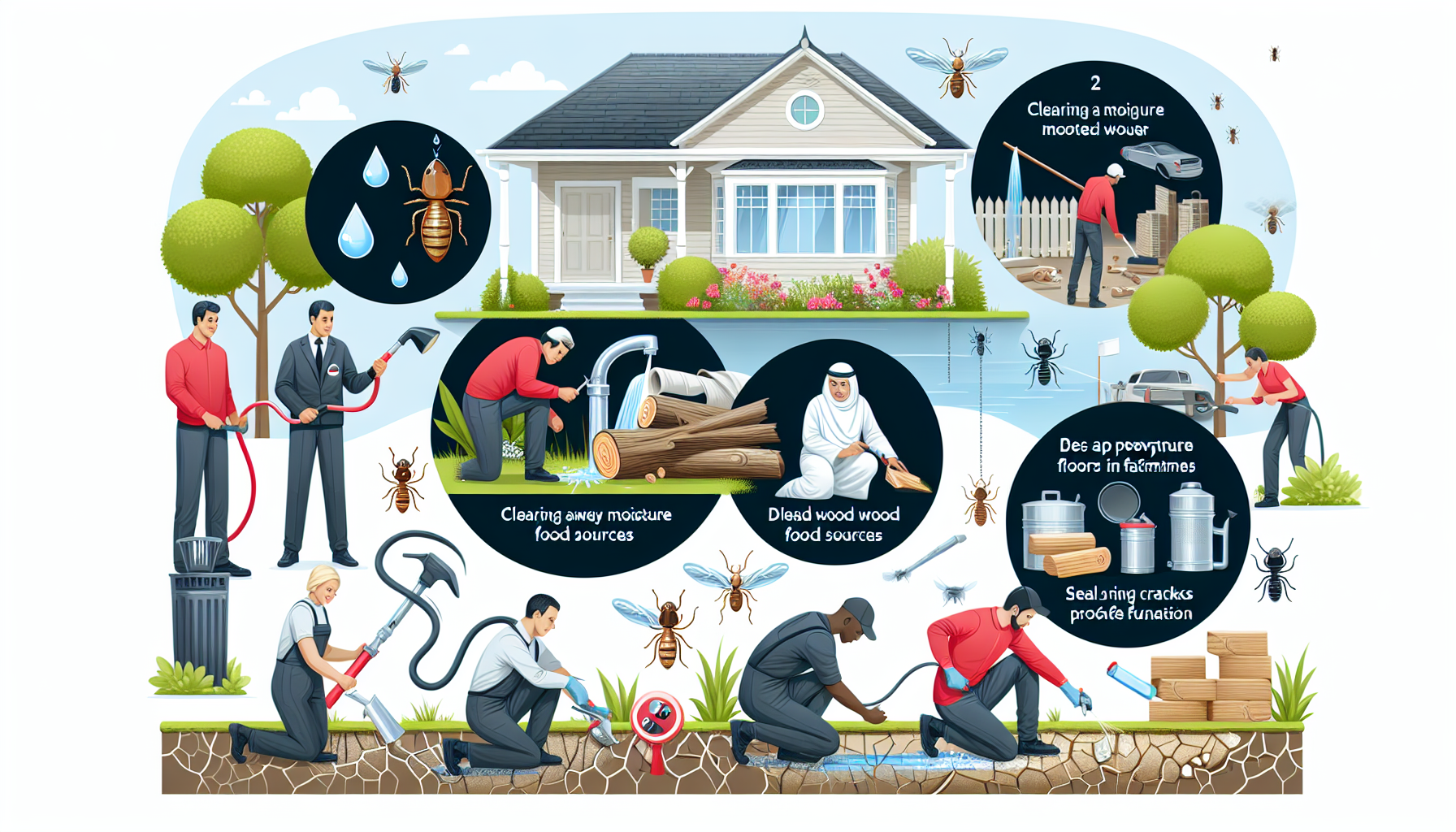
Overcoming termites isn’t merely about winning the battle—it’s about maintaining a termite-free home in the long run. Preventing future termite infestations is about outsmarting these pests by removing their favorite conditions and food sources. Moisture is a termite’s best friend, and by fixing leaky plumbing and ensuring proper drainage, you can make your home less inviting.
Strategic home maintenance plays a critical role in termite prevention. Here are some effective ways to keep termites at bay:
Regularly inspect and replace any wood that comes into direct contact with soil
Install bug screens over vents
Seal gaps around utility lines
Remove tempting treats like dead trees and firewood from around your property
By following these maintenance practices, you can control termites by starving them of their food sources and reduce the risk of infestation.
Protecting Wooden Furniture from Termites
Although your home’s structure is a primary target, termites also enjoy feasting on your wooden furniture. To protect these pieces, it’s important to keep them away from direct contact with the soil and maintain them with termite-resistant polish. Regular inspections can catch infestations early, saving your beloved furniture from becoming termite fodder.
Harnessing the power of sunlight can also serve as a natural deterrent, as termites shun the light and heat it brings. For those looking for a homemade solution, a mixture of white vinegar and olive oil can be applied to furniture, serving as a repellent to keep termites from taking a bite out of your cherished items.
Summary
As we’ve journeyed through the hidden realm of termites, we’ve armed ourselves with knowledge and strategies to detect, treat, and prevent their destructive path. Identifying the signs of an infestation, understanding the types of termites you’re facing, and knowing when to employ wood treatments or call in professional help are crucial steps in maintaining the integrity of your home and furniture.
Remember, the war against termites is ongoing, but with the right tools and vigilance, you can safeguard your abode from these silent destroyers. Stay proactive, be persistent, and trust in the methods that keep your home standing strong against the relentless appetite of termites. Your castle deserves no less than the best defense.
Frequently Asked Questions
How can I tell if I have a drywood termite infestation?
If you see small pinpoint holes in wood, shed wings around windows and foundations, and fecal pellets that resemble salt and pepper piles, it’s a clear sign of a drywood termite infestation. Professional inspections are recommended for accurate detection.
What’s the difference between subterranean and drywood termites?
The main difference between subterranean and drywood termites is their habitat preference and behavior. Subterranean termites create underground colonies and mud tubes, while drywood termites live directly in wood without needing soil contact. This makes subterranean termites more destructive in North America.
Are there natural treatments for termite control?
Absolutely! Neem oil and orange oil are fantastic natural treatments for termite control. Neem oil disrupts their growth, while orange oil’s d-limonene is lethal to termites. Give them a try and see the difference!
When should I consider professional termite control methods?
You should consider professional termite control methods when the infestation is extensive, hard to reach, or DIY methods have failed to work. Don’t hesitate to call in the experts when needed!
How can I prevent termites from infesting my wooden furniture?
To prevent termites from infesting your wooden furniture, keep it away from soil, use termite-resistant polish, inspect regularly, and try natural repellents like a mixture of white vinegar and olive oil! Keep your furniture safe and termite-free.
Proudly powered by BerryRyan


